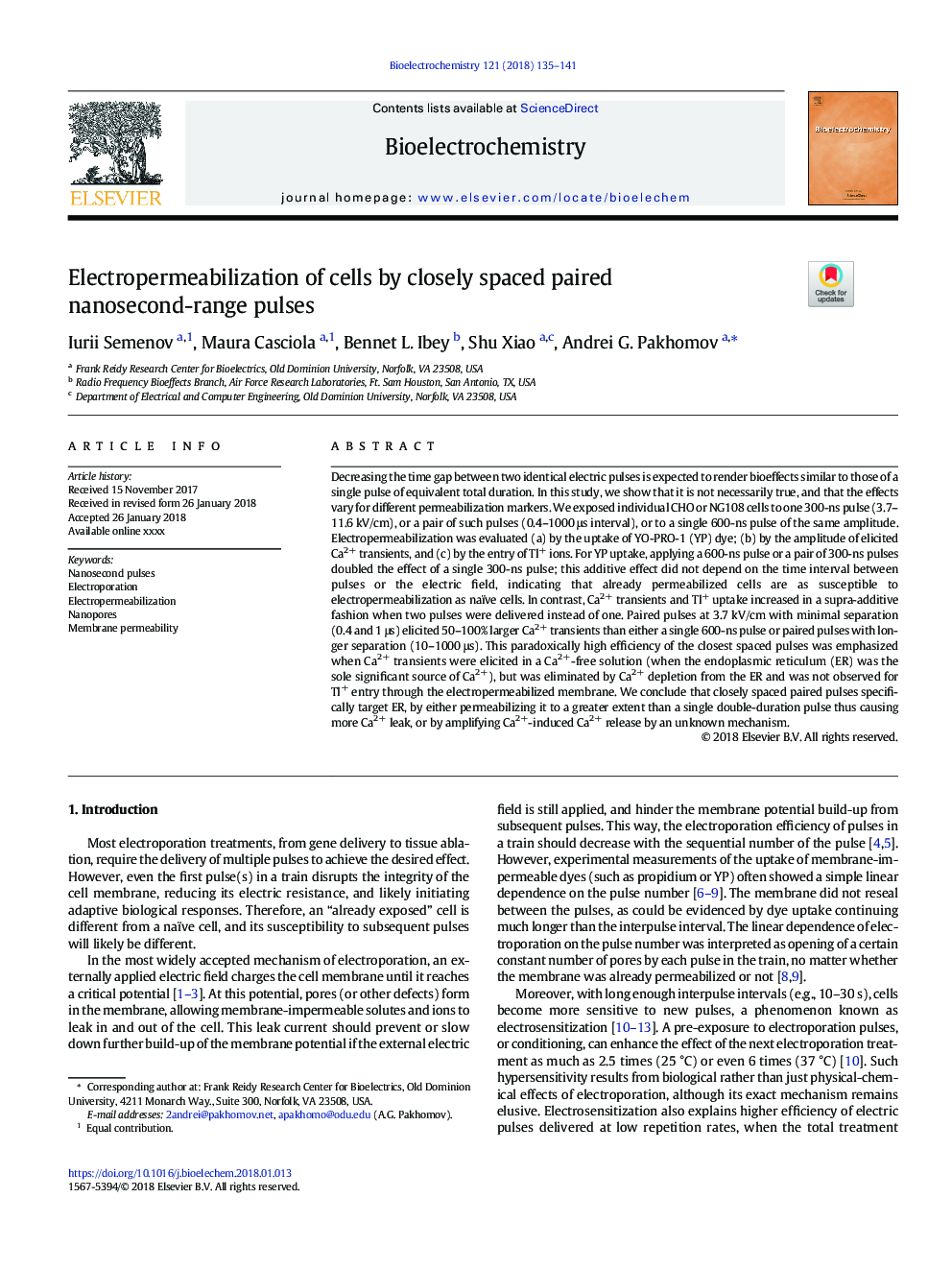| کد مقاله | کد نشریه | سال انتشار | مقاله انگلیسی | نسخه تمام متن |
|---|---|---|---|---|
| 7704598 | 1496892 | 2018 | 7 صفحه PDF | دانلود رایگان |
عنوان انگلیسی مقاله ISI
Electropermeabilization of cells by closely spaced paired nanosecond-range pulses
دانلود مقاله + سفارش ترجمه
دانلود مقاله ISI انگلیسی
رایگان برای ایرانیان
کلمات کلیدی
موضوعات مرتبط
مهندسی و علوم پایه
شیمی
الکتروشیمی
پیش نمایش صفحه اول مقاله

چکیده انگلیسی
Decreasing the time gap between two identical electric pulses is expected to render bioeffects similar to those of a single pulse of equivalent total duration. In this study, we show that it is not necessarily true, and that the effects vary for different permeabilization markers. We exposed individual CHO or NG108 cells to one 300-ns pulse (3.7-11.6â¯kV/cm), or a pair of such pulses (0.4-1000â¯Î¼s interval), or to a single 600-ns pulse of the same amplitude. Electropermeabilization was evaluated (a) by the uptake of YO-PRO-1 (YP) dye; (b) by the amplitude of elicited Ca2+ transients, and (c) by the entry of Tl+ ions. For YP uptake, applying a 600-ns pulse or a pair of 300-ns pulses doubled the effect of a single 300-ns pulse; this additive effect did not depend on the time interval between pulses or the electric field, indicating that already permeabilized cells are as susceptible to electropermeabilization as naïve cells. In contrast, Ca2+ transients and Tl+ uptake increased in a supra-additive fashion when two pulses were delivered instead of one. Paired pulses at 3.7â¯kV/cm with minimal separation (0.4 and 1â¯Î¼s) elicited 50-100% larger Ca2+ transients than either a single 600-ns pulse or paired pulses with longer separation (10-1000â¯Î¼s). This paradoxically high efficiency of the closest spaced pulses was emphasized when Ca2+ transients were elicited in a Ca2+-free solution (when the endoplasmic reticulum (ER) was the sole significant source of Ca2+), but was eliminated by Ca2+ depletion from the ER and was not observed for Tl+ entry through the electropermeabilized membrane. We conclude that closely spaced paired pulses specifically target ER, by either permeabilizing it to a greater extent than a single double-duration pulse thus causing more Ca2+ leak, or by amplifying Ca2+-induced Ca2+ release by an unknown mechanism.
ناشر
Database: Elsevier - ScienceDirect (ساینس دایرکت)
Journal: Bioelectrochemistry - Volume 121, June 2018, Pages 135-141
Journal: Bioelectrochemistry - Volume 121, June 2018, Pages 135-141
نویسندگان
Iurii Semenov, Maura Casciola, Bennet L. Ibey, Shu Xiao, Andrei G. Pakhomov,